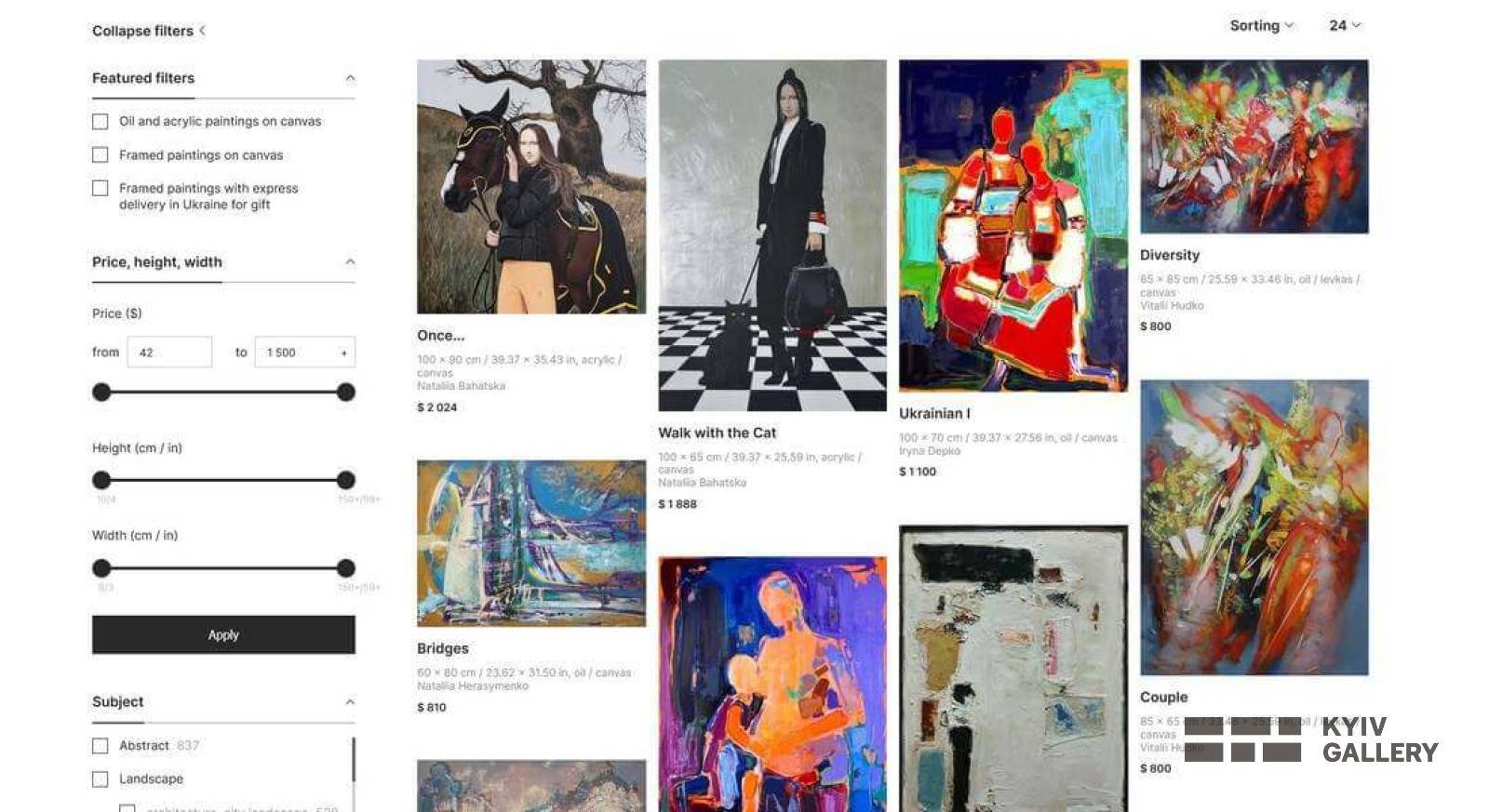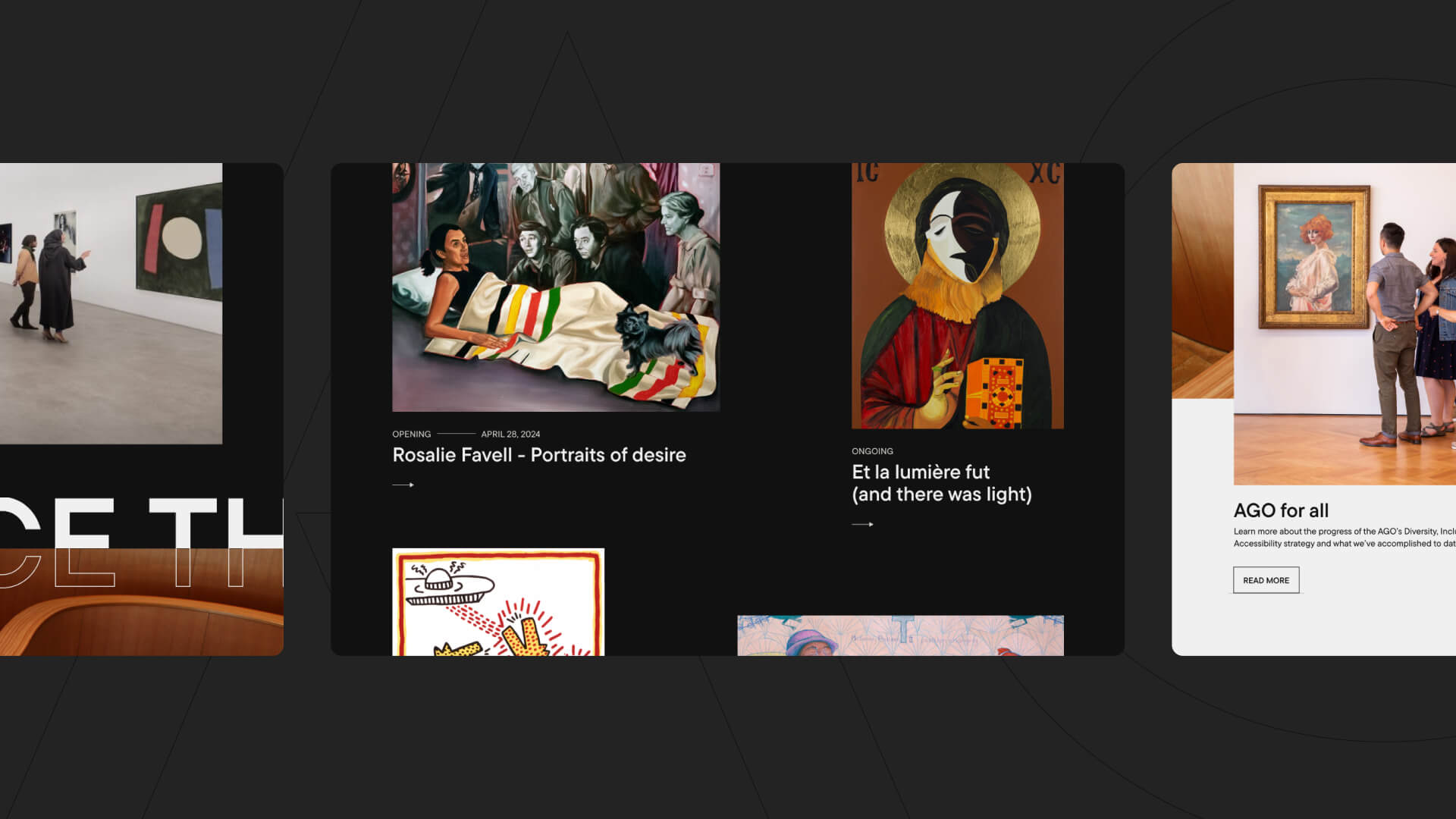How to Start an Online Art Gallery: Step-by-Step Guide to Launch, Market, and Sell Your Artwork
Art’s never been more accessible than it is today and the digital world’s opened up incredible opportunities for artists and curators like me. Starting an online art gallery lets me share creativity with a global audience while building a unique platform that celebrates both emerging and established talent.
I know the idea of launching a virtual gallery can feel overwhelming but with the right approach it’s easier than you might think. Whether I want to showcase my own work or curate pieces from others I can connect with art lovers everywhere—no brick-and-mortar space required. Let me walk you through the essentials so you can turn your passion for art into a thriving online gallery.
Understanding the Concept of an Online Art Gallery

An online art gallery operates as a digital platform where artists showcase original works using interactive web elements. I present artworks through high-resolution images, detailed descriptions, and secure payment systems which closely simulate the physical gallery experience. Browsers view digital catalogs and access curated exhibitions, enabling broader reach than traditional brick-and-mortar venues.
Key features define an online gallery. Interactive galleries display artwork details, provenance records, and artist bios. E-commerce tools process transactions for items like paintings, limited-edition prints, and mixed-media sculptures. Virtual exhibits use slideshow technology and 360-degree views to replicate real-world curation strategies.
Benefits attract both artists and buyers. Artists reach global audiences and receive direct feedback on individual works. Collectors browse diverse collections, compare prices for original versus reproduction art, and contact artists securely. Scalability exists regardless of location or initial collection size, making online galleries accessible to emerging curators.
The table below outlines distinctions between traditional and online art galleries:
| Feature | Traditional Gallery | Online Art Gallery |
|---|---|---|
| Location | Physical, fixed address | Digital, global access |
| Viewing Experience | In-person, scheduled visits | 24/7, from any device |
| Transaction Method | Onsite payment, cash/card | E-commerce, integrated payment |
| Audience Reach | Local, regional | International |
| Artwork Display | Physical installation | High-resolution digital media |
| Artist Interaction | Scheduled meetings | Real-time messaging/email |
These combined elements define the core structure of every successful online art gallery platform.
Essential Steps to Start an Online Art Gallery

Launching an online art gallery depends on structured planning and continual adaptation. I break down the process into actionable steps, covering niche selection, artist connections, and key platform choices.
Defining Your Niche and Audience
Identifying a focused niche shapes my gallery’s identity. I analyze audience types—such as collectors, first-time buyers, or corporate clients—and research trending styles like abstract, digital, or contemporary. Targeted art attracts committed buyers and sets my gallery apart from general online art markets.
Table: Popular Art Gallery Niches and Target Audiences
| Niche | Example Art Mediums | Primary Audience |
|---|---|---|
| Contemporary | Paintings, installations | Urban collectors, galleries |
| Digital Art | NFTs, digital prints | Tech-savvy buyers |
| Photography | Prints, mixed media | Interior designers, hotels |
| Local/Regional Art | Landscapes, folk art | Local businesses, tourists |
Sourcing Artwork and Building Relationships with Artists
Forming direct relationships with creators secures exclusive work and builds trust. I attend local exhibits, join online art forums, and use artist directories to find emerging talent. Collaboration agreements define commission rates, marketing support, and handling of logistics. Clear workflows streamline the selection process and maintain artist satisfaction.
Checklist: Sourcing and Artist Relationship Essentials
- Connect via social media, galleries, and art fairs
- Negotiate commission terms transparently
- Offer marketing and sales support for artist retention
- Schedule regular online meetings for updates and feedback
Choosing the Right Platform and Tools
Selecting gallery software directly affects user experience and sales. I compare e-commerce tools like Shopify Art, Artspan, or custom WordPress builds by examining costs, security, integrations, and scalability. Features built for artists—such as high-res image support, virtual walk-throughs, and secure payments—create a gallery environment that mirrors professional standards.
Table: Comparison of Online Art Gallery Platforms
| Platform | Key Features | Monthly Cost (USD) | Transaction Fees | Integrated Payment System |
|---|---|---|---|---|
| Shopify Art | Art themes, shipping calculators | $29–$299 | 2.9% + $0.30 | Stripe, PayPal |
| Artspan | Portfolio builder, artist network | $12–$35 | 0–10% | Stripe |
| WordPress | Customizable, WooCommerce support | $4–$45 | Varies | Multiple options |
I monitor updates, review community support, and check for compatibility with global shipping and digital license sales. Each platform shapes the perception of my online gallery and defines how international art buyers interact with collections.
Designing and Developing Your Online Gallery

I optimize the look and functionality of my online art gallery by focusing on both technical and visual aspects. Every decision centers on accessibility, seamless navigation, and engaging presentation of artwork.
Creating a User-Friendly Website
I enhance user experience by prioritizing clear navigation, responsive design, and efficient loading speeds. Simple site architecture directs visitors from the homepage to art categories, featured collections, and artist profiles in 2 or 3 clicks. Consistent layout, intuitive menus, and logical search filters support all device types, including mobile and tablet screens. Color palettes and font choices reflect the gallery’s artistic identity while remaining accessible to users with visual impairments.
| Feature | Implementation Detail | Contextual Relevance |
|---|---|---|
| Navigation Bar | Top or side placement, categories, contact page | Helps users find content quickly |
| Mobile Responsiveness | Adaptive grid, flexible images, touch controls | Ensures accessibility on all devices |
| Page Speed Optimization | Image compression, lazy loading | Reduces bounce rate for online art |
| Accessibility | Alt text, high-contrast UI, keyboard commands | Reaches broader art audience |
Showcasing and Curating Art Effectively
I replicate real-world gallery curation through interactive features and high-quality digital presentation. High-resolution image galleries, zoom functions, and 360-degree views give visitors detailed artwork inspection—essential for buyers evaluating textures and techniques. Rich artwork metadata, including titles, dimensions, artist statements, and medium, provide critical context for each piece.
Virtual exhibition layouts arrange works by genre, theme, or artist, guiding visitors through intentional visual journeys. Rotating featured collections and time-limited exhibitions encourage recurring engagement. Every listing links directly to secure purchase and inquiry options, streamlining the buyer’s path.
| Curatorial Element | Digital Gallery Implementation | Example |
|---|---|---|
| High-Resolution Images | 1200px+, adjustable zoom, watermark | Contemporary oil paintings, prints |
| Artwork Metadata | Medium, year, dimensions, provenance | Acrylic abstracts, sculpture bios |
| Thematic Grouping | Genre and artist tags, virtual room layouts | Surrealism collections, artist spotlights |
| Interactive Experience | 360 walkthrough, embedded video interviews | Studio tours, live art events |
Marketing Strategies for Your Online Art Gallery
Effective marketing powers an online art gallery’s visibility and sales. I use multi-channel strategies and tailored branding to attract global buyers and distinguish my platform in a competitive space.
Building an Online Presence and Branding
Consistent branding creates trust and recognition for an online art gallery. I start with a unique gallery name, a memorable logo, and cohesive color palettes that reflect the artistic vision of my collection. My website incorporates artist bios, collection statements, and press mentions to reinforce credibility. Search engine optimization (SEO) targets relevant keywords—like “contemporary online art” or “abstract digital gallery”—that improve search visibility. I use newsletters and regular blog posts to drive traffic and nurture community engagement.
Key Branding Components
| Component | Example Description | Key Effect |
|---|---|---|
| Gallery Name/Logo | Minimalist text logo for modern art gallery | Brand recall |
| Color Palette | Monochrome with one accent color | Visual consistency |
| Artist Stories | Artist backgrounds in collection summaries | Buyer connection |
| SEO Optimization | Targeted keywords on each artwork page | Search ranking boost |
| Email Content | Monthly highlights and new artist spotlights | Ongoing engagement |
Utilizing Social Media and Digital Advertising
Social media platforms expand my online art gallery’s reach and foster direct buyer interaction. I post high-quality artwork previews, behind-the-scenes videos, and artist interviews on Instagram, Facebook, and Pinterest, tagging posts with trending hashtags to reach art collectors and enthusiasts. I coordinate weekly live sessions with featured artists, enabling real-time Q&A and sales pitches. Digital advertising with paid Instagram or Facebook promotions targets art buyers by location, age, and interest, driving qualified traffic to individual artwork listings.
Social and Advertising Channel Comparison
| Channel | Key Content Focus | Notable Feature | Example Use-case |
|---|---|---|---|
| Visual storytelling | Art Reels, Stories, Hashtags | Gallery launches, event teasers | |
| Community building | Groups, Shop integration | Online exhibit invitations | |
| Search-driven exposure | Curated boards, Rich Pins | Showcasing themed collections | |
| Google Ads | Targeted web traffic | Keyword targeting | Promoting limited-edition sales |
| Email Ads | Direct buyer outreach | Custom segments, automation | Announcing new artist partnerships |
Consistent social engagement lets me build relationships and attract art collectors worldwide. Strategic digital advertising enables precise targeting and measurable gallery growth results.
Managing Sales and Customer Experience
Managing sales and optimizing the customer experience drive growth for an online art gallery. I track every buyer interaction to ensure secure transactions and responsive communication from the first visit to post-sale engagement.
Setting Up Secure Payment and Shipping Options
Setting up secure payment and shipping options protects both buyers and my gallery. I integrate SSL encryption on all checkout pages to ensure client data safety. Commonly used gateways like PayPal, Stripe, and Square streamline purchases for global collectors, while offering wired transfers for higher-value sales adds flexibility for institutions and seasoned art buyers.
Clear shipping policies remove ambiguity and improve trust. For original works and limited editions, I provide tiered options such as standard, express, and international shipping, each insured according to artwork value. Detailed order tracking and transparent cost breakdowns reduce disputes.
| Payment Method | Transaction Fee (%) | Processing Time | Global Reach |
|---|---|---|---|
| PayPal | 2.9 + $0.30 | Instant-24 hours | 200+ countries |
| Stripe | 2.9 + $0.30 | Instant-2 days | 40+ countries |
| Bank Transfer | Variable | 1-5 business days | International |
| Square | 2.6 + $0.10 | Instant-1 day | Limited regions |
| Shipping Option | Insurance Provided | Delivery Time | Typical Use Case |
|---|---|---|---|
| Standard | Yes | 4-10 business days | Prints, small originals (US/CAN/UK) |
| Express | Yes | 1-3 business days | High-value artworks, urgent buyers |
| International | Yes or Optional | 7-21 business days | Buyers in EU, Asia, Oceania, Americas |
Handling Customer Inquiries and Support
Handling customer inquiries and support maintains satisfaction and encourages repeat business. I reply to all queries within 1-2 business days, using a dedicated email and integrated chat tool for direct communication. FAQs cover common concerns like framing, authenticity, shipping, and returns, reducing repetitive inquiries.
Personalized responses build loyalty. For collectors asking about exclusive releases or viewing private collections, I schedule virtual appointments or offer early access links. If buyers report issues with shipments or damaged artwork, I offer evidence-based return policies and expedited resolution.
By maintaining consistent support, I improve reviews and referrals, which directly support the gallery’s growth and reputation.
Legal and Financial Considerations
Operating an online art gallery involves meeting specific legal and financial requirements that directly impact platform operations, international sales, and relationships with artists and buyers. I address necessary actions and responsibilities below.
Business Structure and Registration
Choosing the right business structure establishes the foundation for legal compliance and taxation. I compare common structures in the United States, where sole proprietorships, LLCs, and corporations offer different legal protections and tax obligations.
| Structure | Key Features | Taxation | Relative Complexity |
|---|---|---|---|
| Sole Proprietorship | Owner-controlled, simple setup | Personal income tax | Low |
| LLC | Liability protection, flexible management | Pass-through or corporate tax | Moderate |
| Corporation | Separate legal entity, investor-ready | Corporate and shareholder tax | High |
Registering the gallery’s business entity and securing a federal EIN streamlines tax filing and sales tax collection through platforms like Shopify or WooCommerce.
Art Copyright and Licensing
Protecting intellectual property in digital galleries requires strong copyright policies and artist agreements. I specify usage rights in artist contracts and clarify royalty distribution and resale rights to prevent future claims or disputes. Compliance with the Digital Millennium Copyright Act (DMCA) also protects the platform against infringing content uploaded by third parties.
Taxes and International Art Sales
Managing taxes involves understanding local, national, and international requirements. I collect and remit state sales tax in the U.S. or Value Added Tax (VAT) for European buyers, as required by customer location. For cross-border shipments, I declare artworks at customs and account for import duties or restricted materials based on the receiving country’s laws.
| Tax Category | Gallery Context | Common Platforms Handling Compliance |
|---|---|---|
| U.S. Sales Tax | Domestic transactions | Shopify, BigCommerce |
| VAT | EU customer sales | WooCommerce, Squarespace |
| Import Duties | International shipments | Third-party fulfillment, ShipBob |
Contracts and Payment Security
Drafting clear contracts with artists and buyers sets out the terms for sales, returns, and intellectual property. I use secure online payment providers like Stripe or PayPal, integrating SSL certificates for encrypted transactions. Chargeback protection and fraud monitoring policies lower financial risk on high-value art sales.
Data Protection and Privacy Policies
Collecting buyer and artist information means following data privacy regulations like the General Data Protection Regulation (GDPR) and the California Consumer Privacy Act (CCPA). I post transparent privacy policies and employ security tools to safeguard user data, building trust and minimizing legal exposure.
Anti-Money Laundering (AML) in the Art Market
High-value art transactions draw AML scrutiny as criminals may attempt to launder funds through online galleries, similar to practices monitored in online casinos. I conduct identity verification for large-value transactions and maintain transaction records to comply with FinCEN advisories and EU AML directives, reducing financial crime risk.
| AML Checklist | Application to Online Art Galleries |
|---|---|
| Identity Verification | Verify buyer and seller for sales over $10,000 |
| Transaction Reporting | File suspicious activity reports (SARs) |
| Record Keeping | Retain purchase and payment records |
Conclusion
Building an online art gallery has never been more achievable or rewarding. With the right approach you can create a vibrant platform that connects artists with collectors worldwide and brings unique works to a global stage.
I’ve found that staying adaptable and committed to both artists and buyers is key to long-term success. By combining creativity with smart business practices you can turn your passion for art into a thriving online venture that stands out in the digital age.
Frequently Asked Questions
What is an online art gallery?
An online art gallery is a digital platform where artists can display and sell their artworks. It typically features high-resolution images, detailed descriptions, and secure payment systems, allowing artists to reach a global audience and buyers to browse and purchase art from anywhere.
How does an online art gallery differ from a traditional gallery?
An online gallery exists entirely on the internet, making art accessible to a global audience 24/7. Unlike traditional galleries, online galleries don’t require a physical space, and transactions, viewing, and communications all happen digitally.
What are the main benefits of launching an online art gallery?
Online art galleries offer global reach, lower operating costs, easy setup, direct artist-buyer interaction, and greater flexibility in displaying and marketing art. They also allow artists to receive feedback and build relationships with collectors worldwide.
What are the essential steps to start an online art gallery?
Key steps include defining a niche and target audience, sourcing artwork, building relationships with artists, choosing the right platform, designing a user-friendly website, and applying effective marketing strategies to attract visitors.
How do I choose the right platform for my online art gallery?
Compare platforms based on features, costs, scalability, e-commerce capabilities, user experience, and available support. Popular options include Shopify, WordPress, and custom-built solutions tailored to the needs of art sellers.
How can I optimize my online gallery for a better user experience?
Ensure your website features responsive design, fast loading speeds, straightforward navigation, high-quality images, and engaging exhibition layouts. Making your gallery easy to browse increases visitor satisfaction and sales opportunities.
What marketing strategies work best for online art galleries?
Effective strategies include SEO for better search visibility, consistent branding, social media engagement, digital advertising, newsletters, and maintaining a blog to attract and grow your audience.
What payment methods and shipping options should I offer?
Provide secure payment methods like PayPal and Stripe, and clearly outline shipping policies. Offer multiple shipping options to meet different buyer needs and ensure your payment gateway is reliable and trusted.
How do I protect artists’ and buyers’ rights online?
Establish clear contracts and artist agreements, include comprehensive copyright policies, and implement strong data protection measures. These steps help build trust and safeguard intellectual property and transactions.
What legal and financial considerations should I be aware of?
Choose the right business structure (e.g., sole proprietorship, LLC, or corporation), manage taxes for domestic and international sales, and comply with anti-money laundering (AML) and data protection regulations to avoid legal issues.
